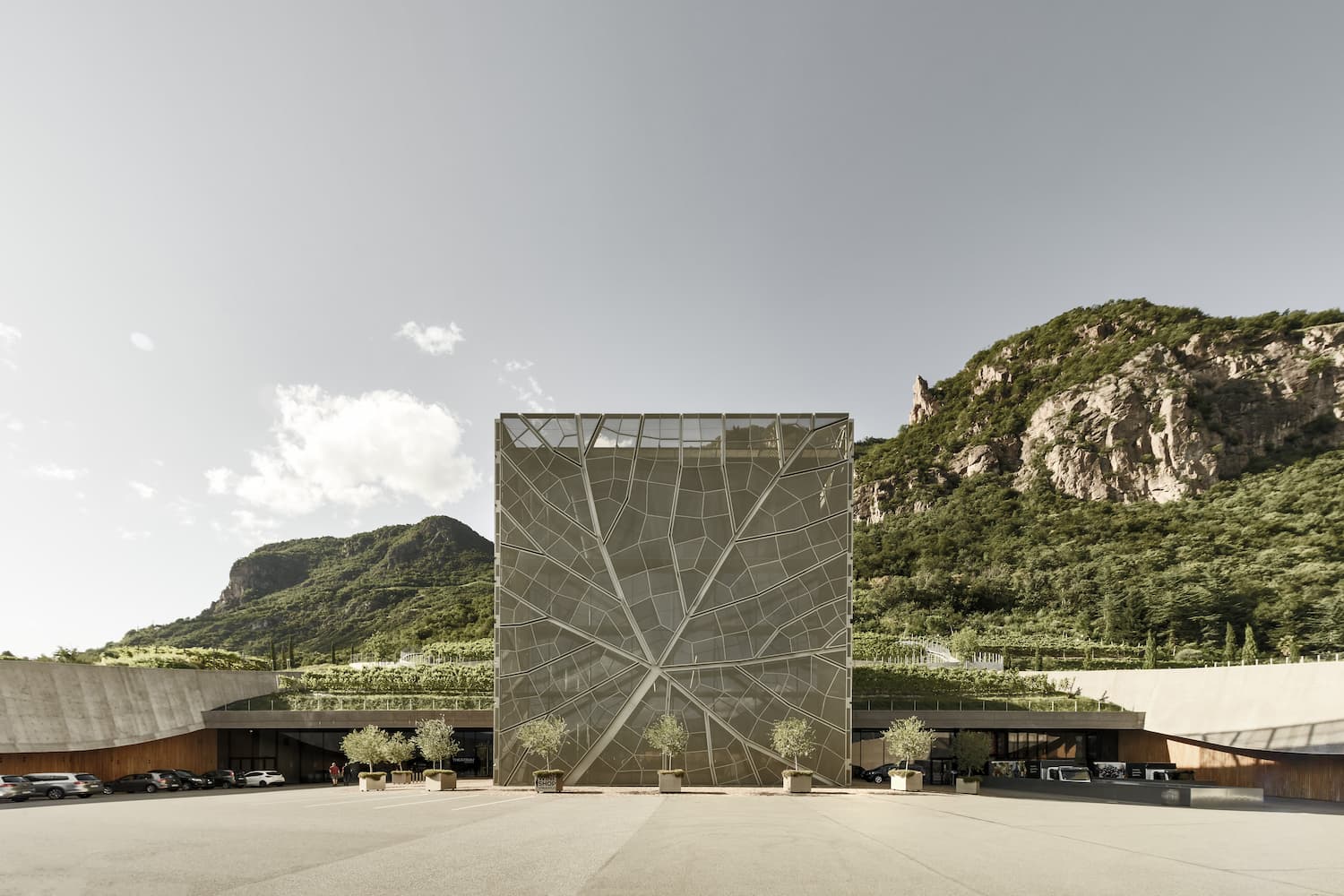North Stars:

Energy Efficiency

Waste Management

Certifications
“For us, sustainability isn’t an option or a trend — it’s an inherent part of our winery’s identity and mission.”
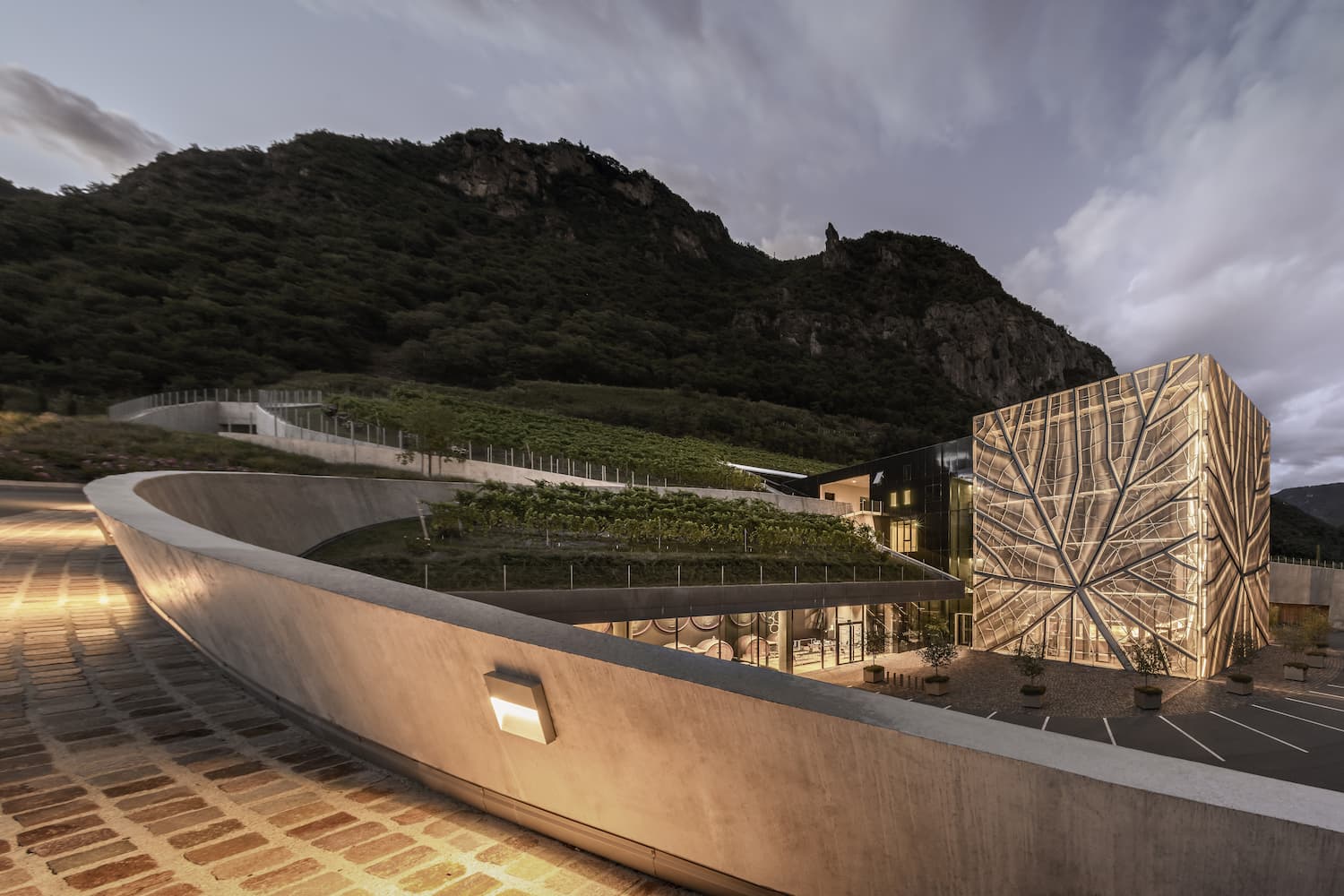
Exterior of Kellerei BOZEN. Courtesy of KBZ.
A Land Between Worlds
Beneath the shadow of the Dolomites, where jagged limestone peaks pierce the sky and hiking trails zigzag through forests and pastures, lies a wine region few Alpine adventurers realize they’ve passed through. South Tyrol — also called Alto Adige — has long drawn hikers and skiers, but it turns out the region’s wine is also worth the trip. Nestled into the slopes is one of Italy’s most innovative and community-driven wineries: Kellerei (Cantina) BOZEN.
Formed as a cooperative, Cantina BOZEN breaks every stale stereotype of what a wine co-op in Europe looks like. Here, 224 member growers work together not just to share resources but to turn out wines that are thoughtful, reflective of place, and tied to the families behind them. What further sets Cantina BOZEN apart from its peers, however, is its design-forward, energy-efficient architecture represented in its most beautiful form as a ClimateHouse cube.
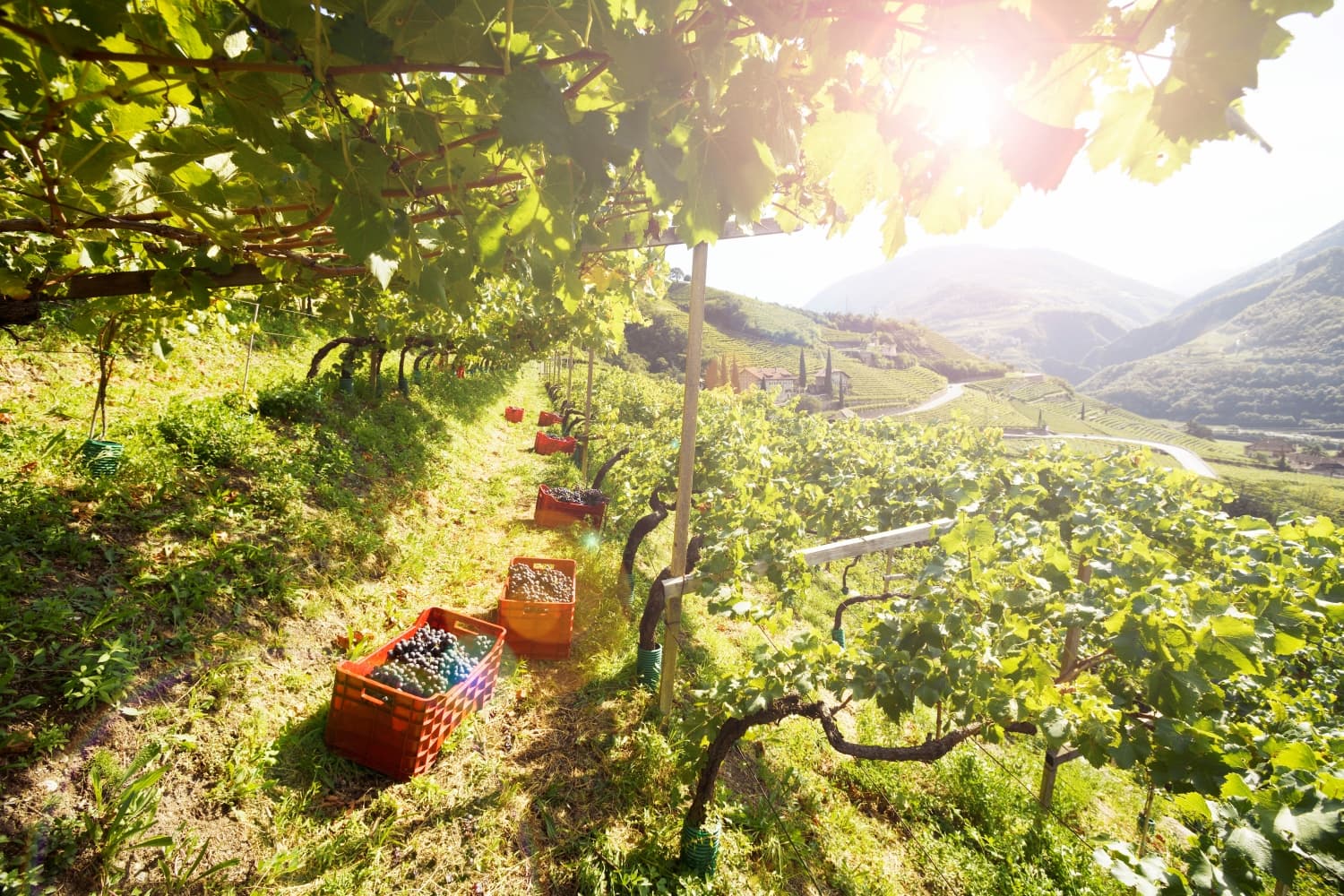
Vineyards of Kelleri BOZEN. Courtesy of KBZ Ernte Moar.
Grit, Elevation, and Heroic Viticulture
Many consumers think they know Italian wine – Tuscany, of course, comes to mind – but few think of the country’s cooler Alpine stretches as a source of expressive wine. Of course, Alto Adige has a complex history and complex terrain, and it’s semi-remote location makes travel there challenging. No wonder it’s Italy’s best kept secret.
For centuries, the region belonged to the Austro-Hungarian Empire before becoming part of Italy after World War I. Even today, Bolzano feels more Viennese than Venetian. Street signs are in both German and Italian. Locals grow up bilingual, and the culture carries the legacy of its dual identity. This is a place where your aperitivo plate might come with pretzels and speck instead of focaccia and prosciutto, and where hearty alpine dishes like spätzle and knödel appear more often than linguine alle vongole (if ever.)
The terrain is steep and stubborn. Vines cling to terraces from about 650 to over 3,300 feet above sea level, in some places teetering above larch forests and under the dramatic Rosengarten peaks. Farming here isn’t romantic — it’s a grind. Italians call it “viticoltura eroica,” heroic viticulture. It’s hard-earned, hand-tended, and just plain gutsy. The kind of place where harvest sometimes means hauling grapes down a slope in a backpack.
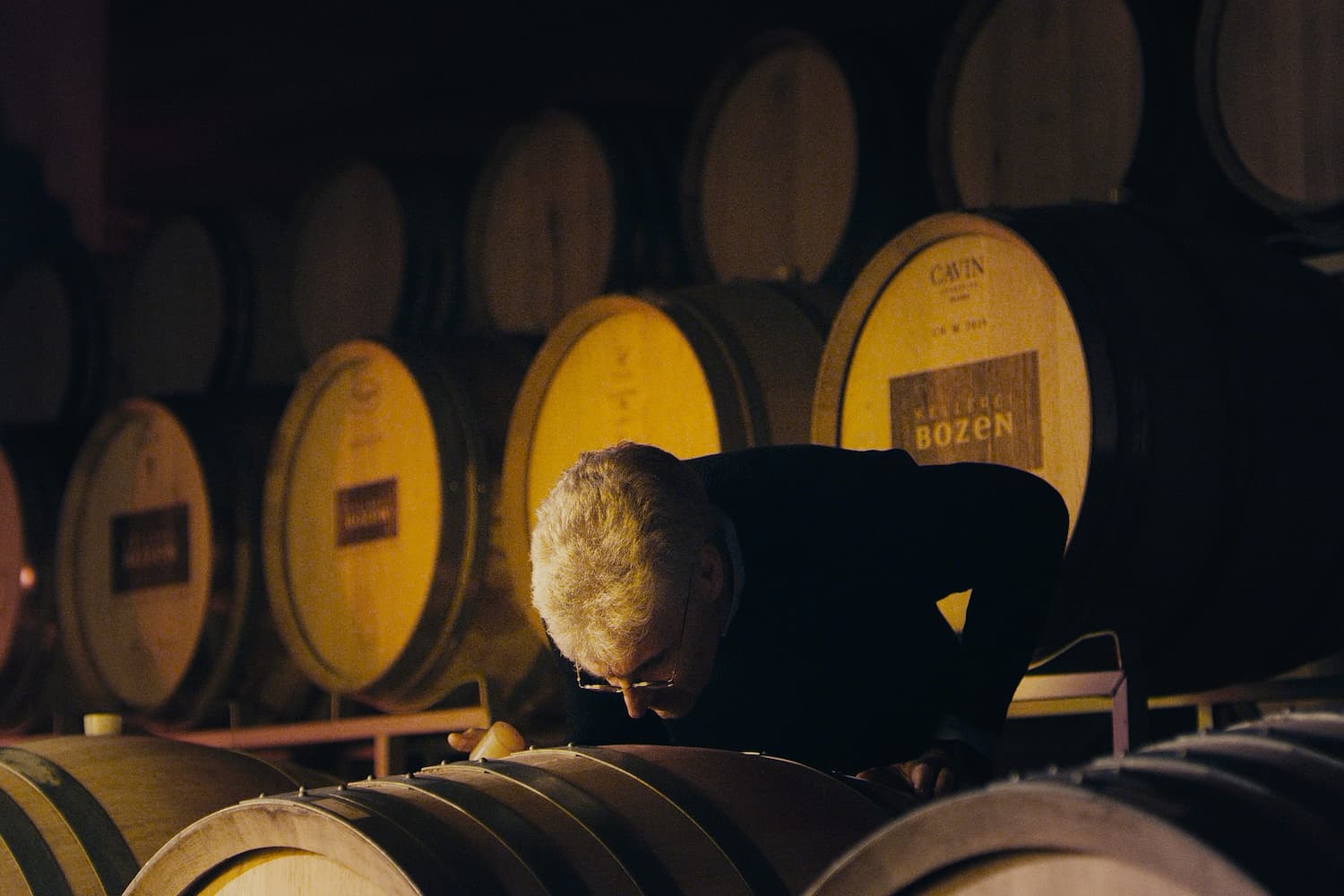
In the cellar at Kellerei BOZEN. Courtesy of KBZ.
A Rising Tide Lifts All Boats
Cantina BOZEN’s roots stretch back to 1908, when 30 growers in the Gries district teamed up to survive economic turbulence. Another group in St. Maddalena followed in 1930, enduring fascist rule and war to hold onto their land. During World War II, when Allied bombing damaged the Bolzano winery near the rail yard, the two co-ops had a choice – team up to survive or leave the world of wine for alternative employment.
Thus, in 1944 and 1945, Cantina Santa Maddalena and Cantina Gries produced their wines together for the first time. In 2001, the groups completed a formal merger to become Cantina BOZEN.
Today, the co-op spans about 865 acres across Alto Adige’s mosaic of soils and micro-climates. Most members tend just a few acres of vines — often land that’s been in the family for generations. At a time when small growers in places like Portugal’s Douro are being squeezed out, Cantina BOZEN shows that cooperation can keep people working their land instead of fleeing for city jobs.
“Without our grower families, there would be no Cantina Bozen. They are the roots of everything we do – generation after generation, working their land with care and passion. This is not just winemaking; it’s community in its purest form,” explains Matthias Messner, Director, Cantina BOZEN.
In 2018, Cantina BOZEN unveiled a new facility just outside Bolzano. From a distance, it looks like a large bronze leaf embedded in the hillside. Up close, the glittering prism marks Cantina BOZEN as the first cooperative winery to achieve the holy trinity of design, functionality, and efficiency, earning it certification from CasaClima Wine®, a green building standard for energy efficiency and renewable energy use.
“For us, sustainability isn’t an option or a trend — it’s an inherent part of our winery’s identity and mission,” says Messner.
Inside, grapes move gently with gravity through five levels without pumps. The operation is built into a hillside slope to reduce energy use and maintain naturally cool temperatures underground. Solar panels, pellet-fired heating, passive cooling, biodegradable vineyard ties — all of these efforts add up to a winery that’s as serious about the climate as it is about quality.

Kellerei BOZEN Sauvignon Blanc. Courtesy of Mintmediahouse.
The Underdog Wines Worth Knowing
Since 1988, Cantina BOZEN has run its Progetto Qualità, a program meant to enhance grape quality while ensuring better environmentally friendly growing practices. Today, 83 growers cultivate about 290 acres to stricter standards: low yields, older vines, and optimal vineyard placement. Some vines are nearly 100 years old.
While most visitors come in expecting Pinot Grigio, they often leave with a bottle of Lagrein or Magdalener. Lagrein is Alto Adige’s power player — dark, spicy, and brooding. Magdalener, by contrast, was once the humble table wine of the region. Made mostly from Schiava, boosted by a splash of Lagrein, it’s lighter, more aromatic, and historically…not very cool.
But that’s changing. Once dismissed as your grandfather’s lunch wine, Magdalener has enjoyed a comeback. Younger drinkers looking for lower-alcohol reds with food-friendly charm are helping revive its image, while next gen winemakers in the region are crafting Schiava with more intention than their predecessors. Cantina BOZEN’s version is fresh and herbal with soft red fruit — easy to love and far from rustic. The co-op’s historical ties to St. Magdalener have made it a torchbearer for this unsung grape.
What surprises many visitors is how current the brand feels. The design is clean – there’s no faux-rustic schtick.The wines are fresh and pure. From the vibrancy of the brand’s cool-climate Sauvignon Blanc called Mock, to the crunchy red-fruit brightness of the St. Magdalener Classico called Huck am Bach, there’s a wine for every palate – and price point. In fact, the wines of Cantina BOZEN reflect incredible value, and should you visit, bring a suitcase to carry a few bottles home.
Beyond the quality of the wines, at Cantina BOZEN, your dollars have real impact. The wines are good, sure, but company keeps families on the land, vineyards out of developers’ hands, and rural Alpine culture alive. And as a bonus, they pair well with speck, cheese, and high-altitude air.
In Alto Adige, the art of wine is alive — and the people behind it aren’t going anywhere, thanks to a little cooperation and a lot of wine.
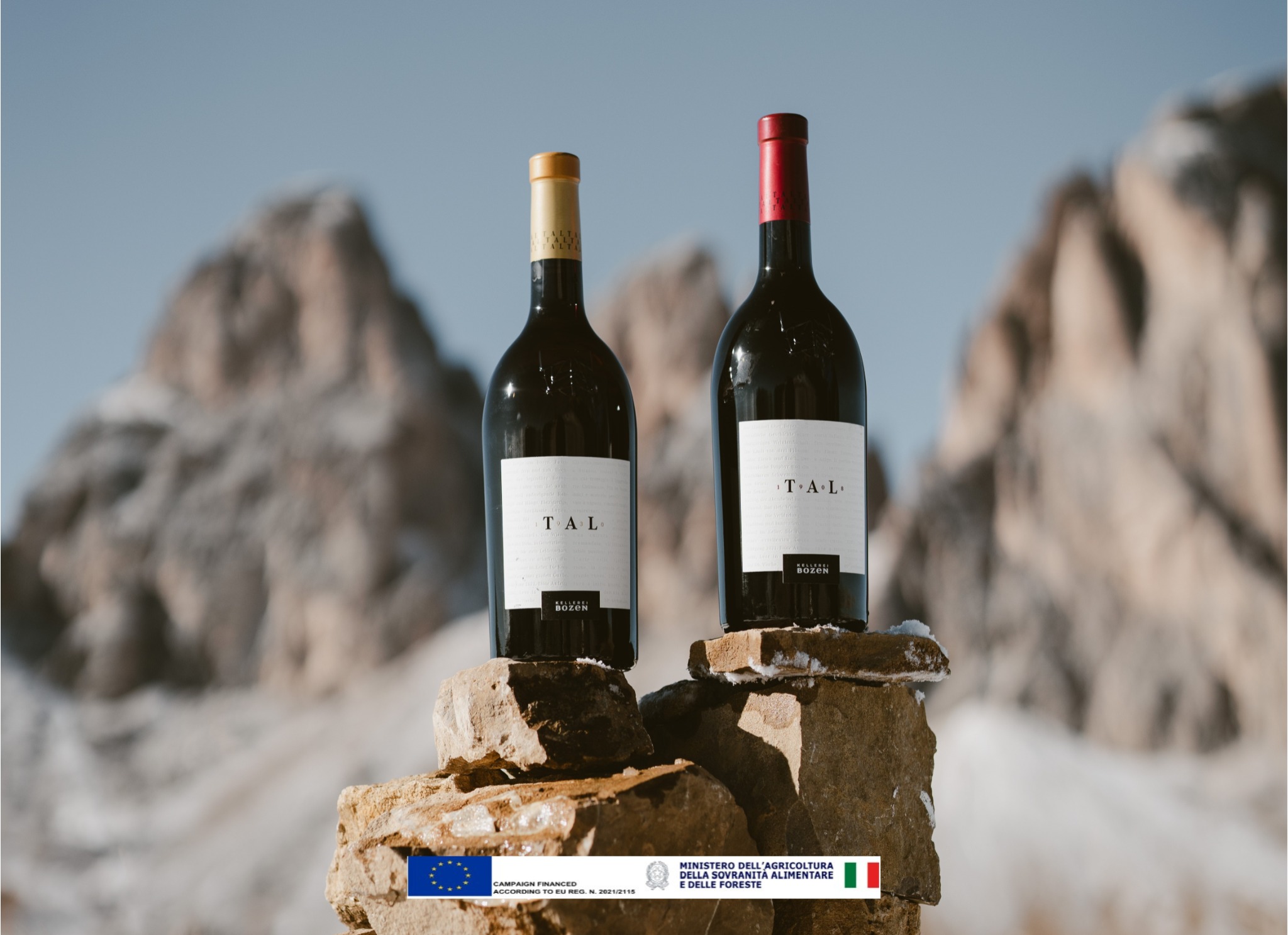
Kellerei BOZEN wines in the mountain air. Courtesy of KBZ
Getting There: Half the Fun
Getting to Alto Adige isn’t exactly easy, but that’s part of the charm. Think of it as Slow Travel.
From the U.S., your best bet is flying into Venice, Verona, or Milan. From there, hop a regional train toward Trento, where you’ll likely need to transfer to a local line bound for Bolzano. The entire journey can take four to six hours depending on your route, but the mountain views along the way make it feel more like a scenic adventure than a slog. Once in Bolzano, you’ll need to rent a car (if you didn’t rent one and drive from a major city.)
Cantina BOZEN sits just outside the city center of Bolzano and is open to visitors Monday through Saturday. The contemporary tasting room offers a panoramic view of the surrounding vineyards and a curated selection of wines available for tasting and purchase. Seasonal tours are available by appointment and include a walk through the winery’s gravity-fed architecture and sustainable cellar. The team speaks English, German, and Italian, and is happy to guide guests through the region’s native varieties.
For more information or to book a visit, head to www.kellereiBOZEN.com.
Funded by the European Union.
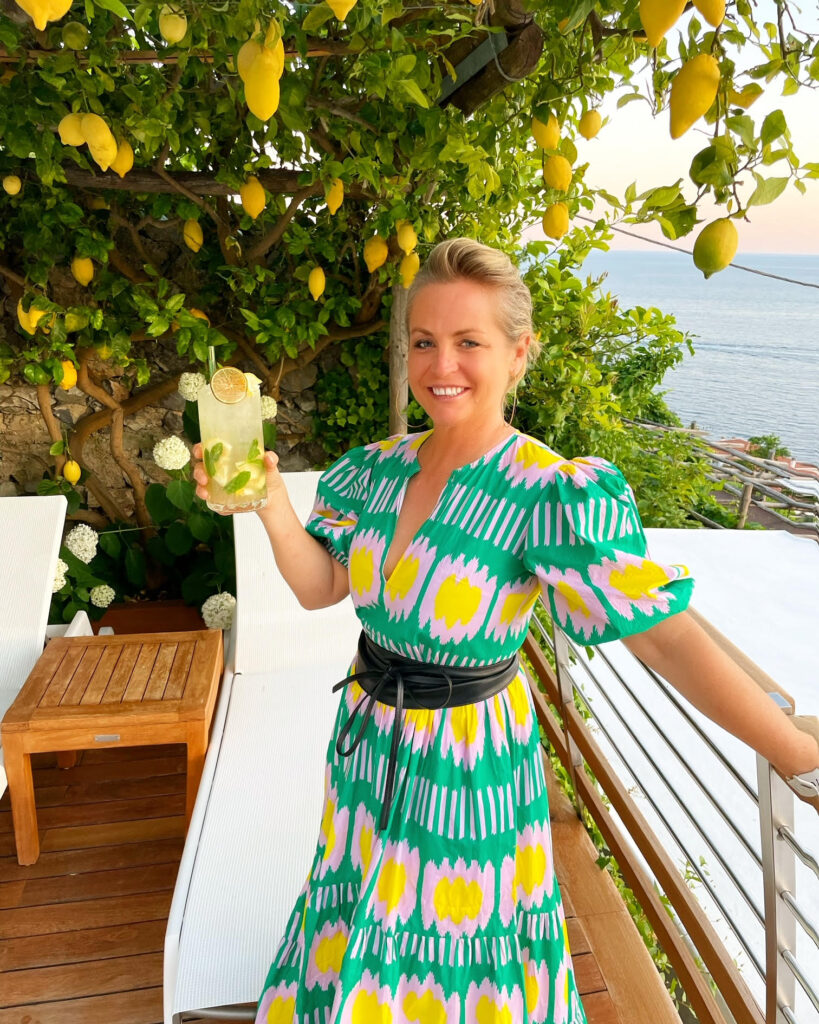
Founder and CEO of Azure Road, Lauren Mowery is a longtime wine, food, and travel writer. Mowery continues to serve on Decanter Magazine’s 12-strong US editorial team. Prior to joining Decanter, she spent five years as the travel editor at Wine Enthusiast. Mowery has earned accolades for her writing and photography, having contributed travel, drinks, food, and sustainability content to publications like Food & Wine, Forbes, Afar, The Independent, Saveur, Hemispheres, U.S. News & World Report, SCUBA Diving, Plate, Chef & Restaurant, Hotels Above Par, AAA, Fodors.com, Lonely Planet, USA Today, Men’s Journal, and Time Out, among others.
Pursuing her Master of Wine certification, she has also been a regular wine and spirits writer for Tasting Panel, Somm Journal, VinePair, Punch, and SevenFifty Daily. Mowery is a graduate of the University of Virginia and Fordham Law School, and she completed two wine harvests in South Africa.
Follow her on Instagram @AzureRoad and TikTok @AzureRoad
North Stars: Community Support, Energy Efficiency, Heritage Value


